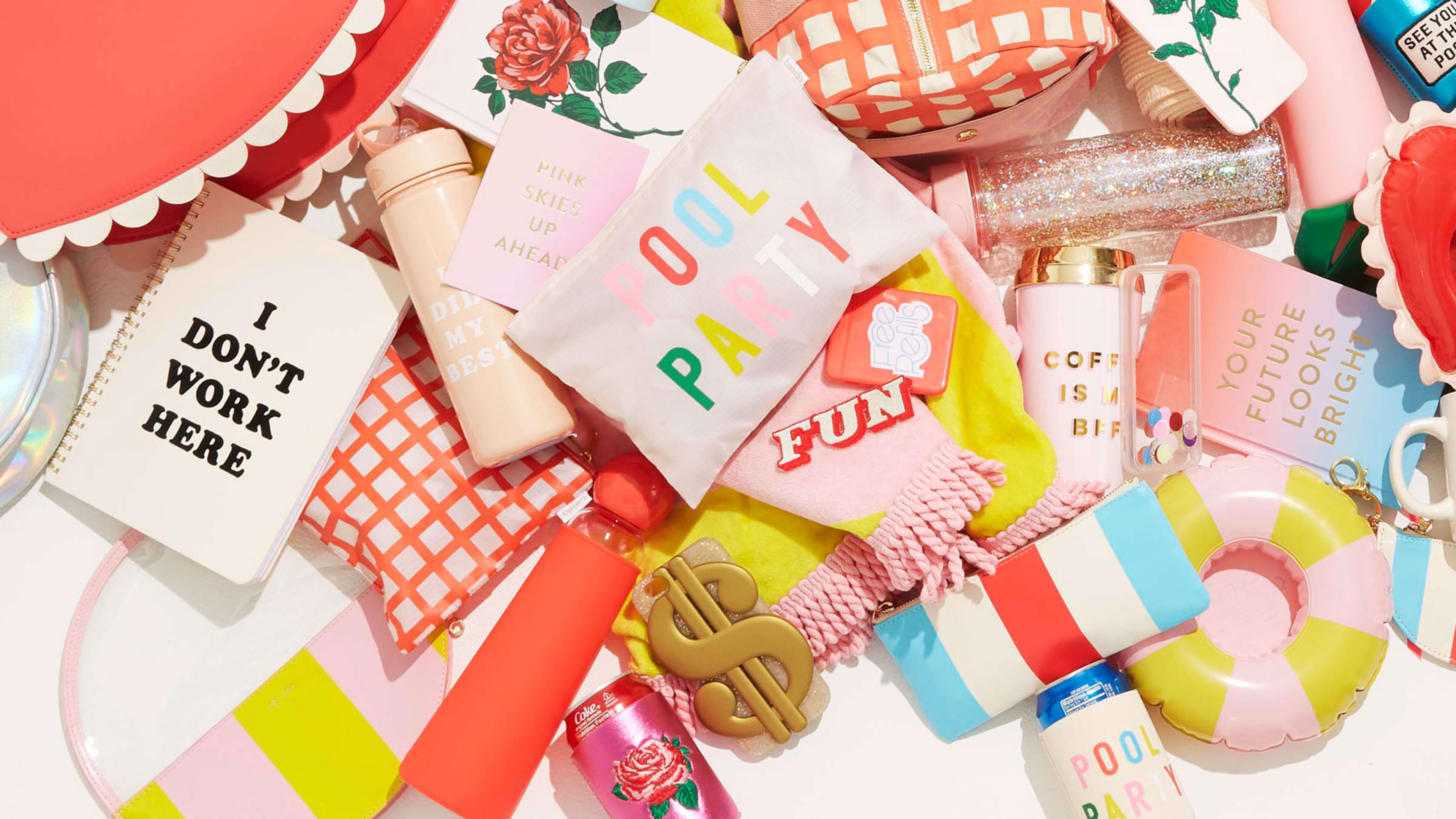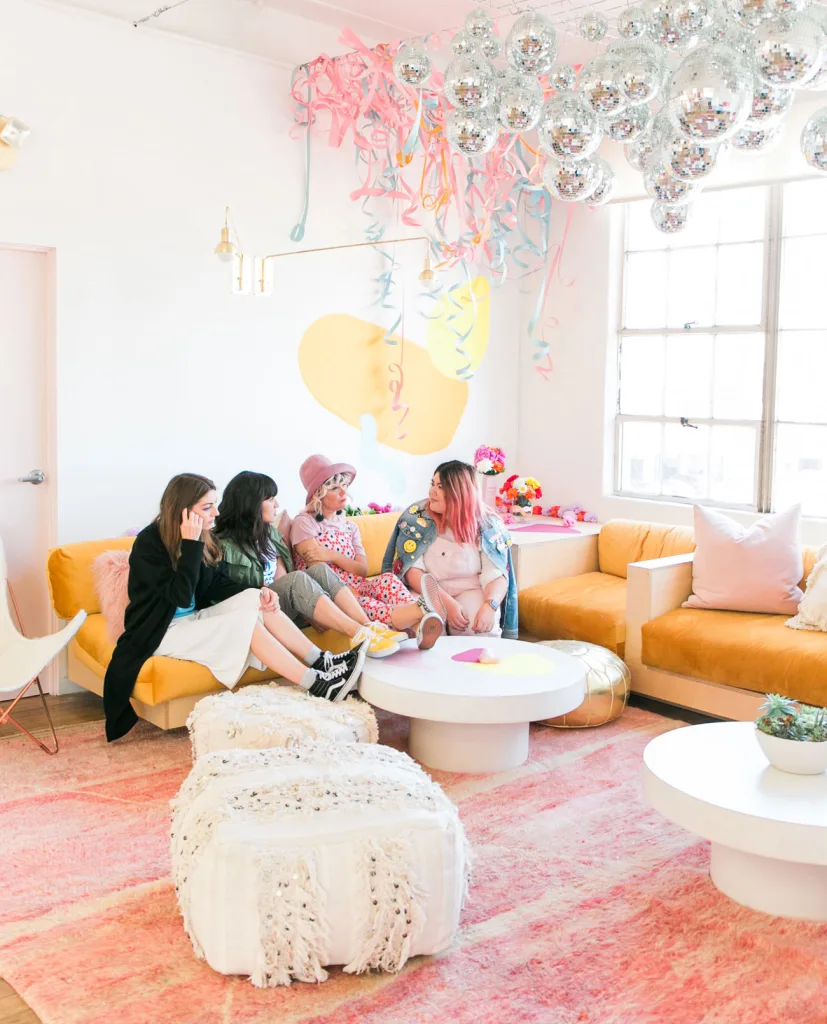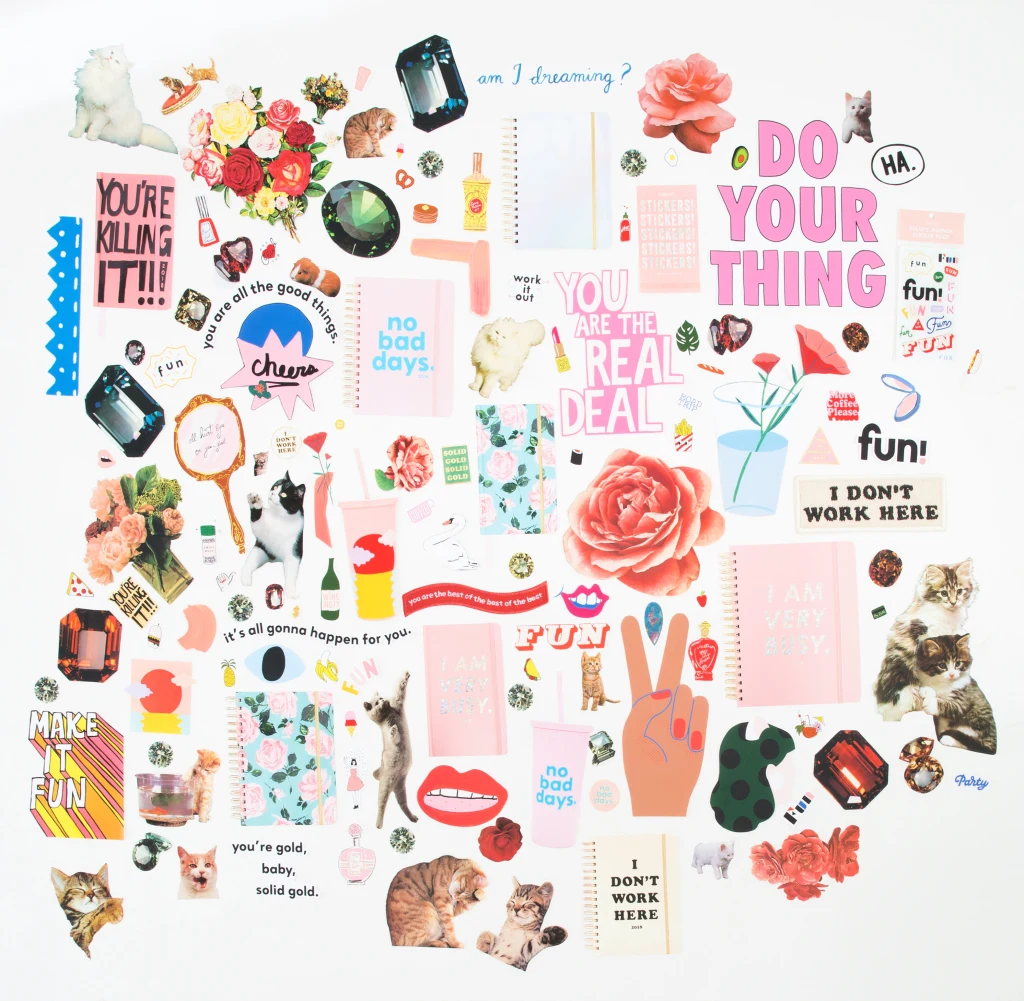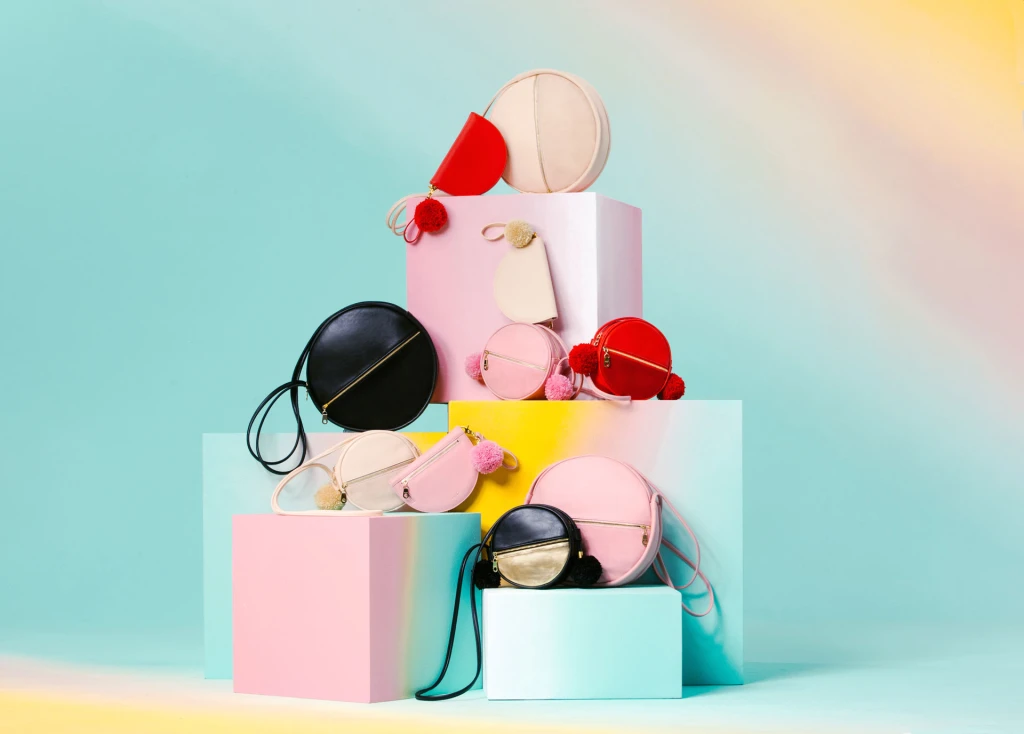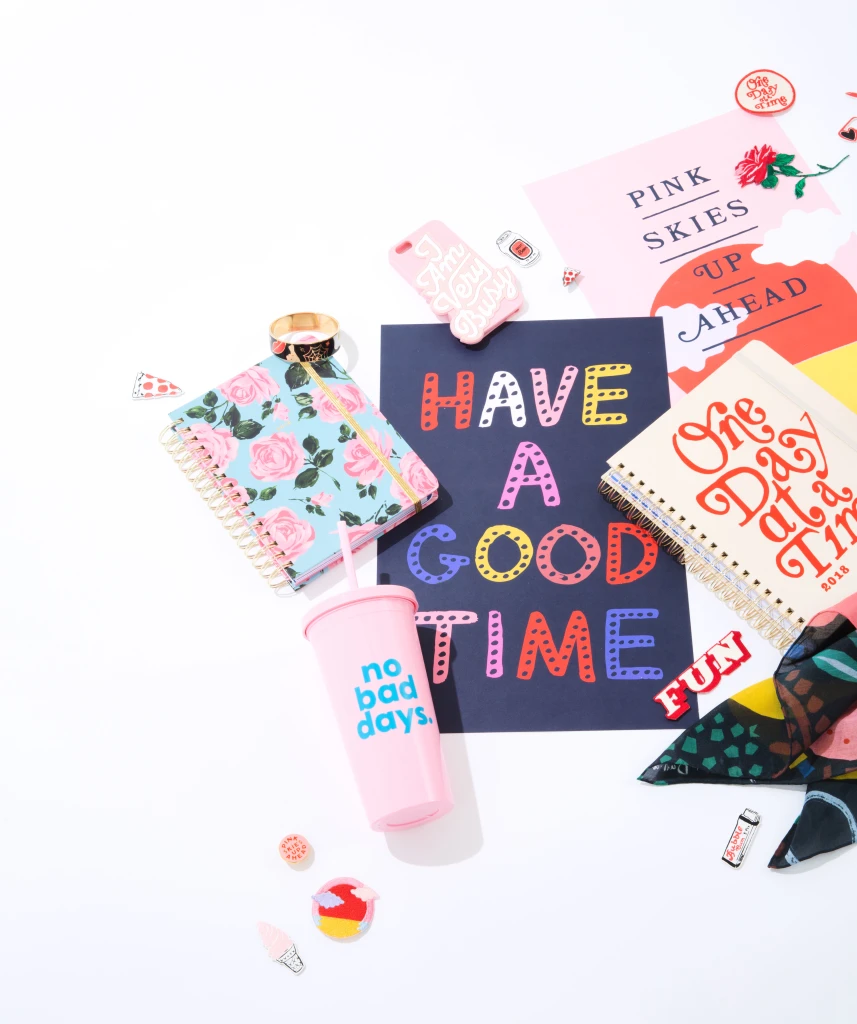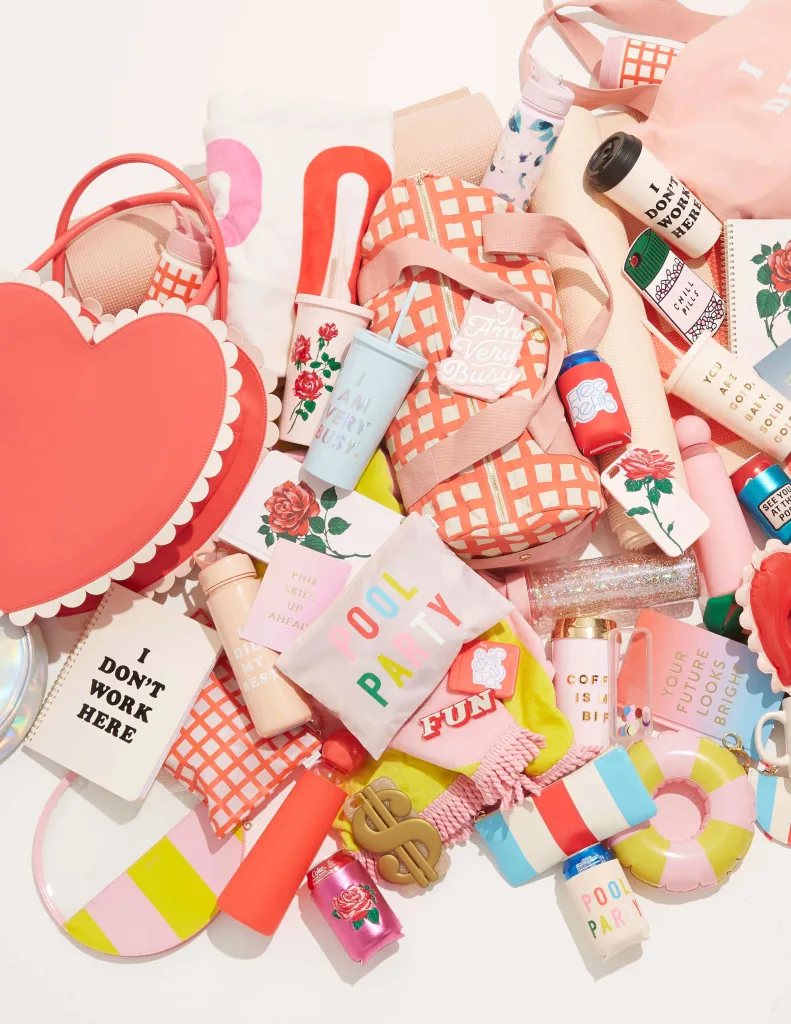When I was in high school, one of my favorite late-summer rituals was going to the stationery store with my mom to buy a planner for the new academic year. On the surface, the organizer was meant to help me remember homework assignments. But it was much more than that. In the pre-smartphone age, it was a place to scribble quotes I loved, write down the phone number of a new friend, or doodle during a particularly boring calculus class.
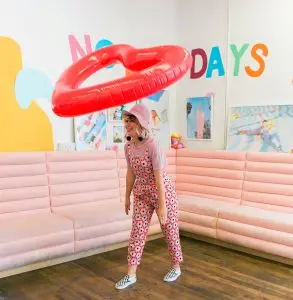
Related: Millennials Are Now The Largest Generation – Get Used To It
Over the last decade, the brand has grown from a small operation based in Gotch’s L.A. apartment to a multi-million dollar brand. As Ban.do’s creative director, she helps create bags, clothes, makeup, jewelry, stationery, and more that are unabashedly optimistic and girly, and have some vintage flair. Ban.do now sells products in over 3,000 stores–including Bloomingdale’s, Saks Fifth Avenue, Nordstrom, Macy’s, and American Eagle Outfitters. Its products are available in more than 50 countries, and the company recently collaborated with Starbucks in the Asia Pacific region to sell drinkware, stationery, and totes in-store.
Banking On Nostalgia
On the surface, Ban.do’s youthful aesthetic would seem perfect for the tween set, but in fact, a 87% of Ban.do’s customers are between the ages of 18 and 35. Figuring out what that coveted demographic wants is what’s made the company successful.
Despite being a over a decade older than her key demographic (she’s 45), Gotch has always had her finger firmly on the pulse of what millennial women want: a brand that makes them feel something–including nostalgia for their youth. “I get so angry when people tell me that the aesthetic of our brand is ‘too young,'” Gotch says. “I like to think that our brand is giving people permission to enjoy things they liked in their childhood. We’re saying that you don’t have to conform to a script about what you’re supposed to wear or like when you’re a given age.”
In 2008, Gotch and her best friend Jamie Coulter were based in L.A. doing photography and styling work. They discovered they had a knack for creating a particular ethereal look in photoshoots with the help of elaborate floral crowns crafted out of vintage millinery supplies. Gotch featured a couple of these hair accessories on her personal blog and discovered that women were clamoring to get their hands on one. “We thought of ourselves as creatives, not business people,” Gotch recalls. “But the internet made it easy enough for anyone to start a business.”
Exclusive: Viacom’s New Study Is A Marketer’s Blueprint For Millennials
So together, Gotch and Coulter, hunkered down and made fifty floral hair accessories. Gotch photographed them and enlisted her brother to build a simple website. They named this new venture Ban.do, a play on the French word “bandeau” which refers to a headband, and shared the site with a couple of bloggers. On the first day the site went live, all fifty crowns sold out. “I called my agent to cancel all my photography gigs,” Gotch says with a laugh. “I was so sure I was going to be a fucking millionaire by the end of the month.”
This timeline was a bit optimistic–it would take a few years for the brand to start raking in millions in revenue–but Gotch wasn’t far off. Ban.do had hit a nerve with women in their late teens and early twenties. More than a product, Ban.do was selling an emotion. This was the start of the recession, and many millennials were feeling scared about the future. But the happy world that Gotch and Coulter had created through the Ban.do brand felt like a bit of an escape from the struggles of everyday life.
With prices between $95 and $450 for elaborate hair decorations made from vintage materials, Gotch was worried that Ban.do might have priced itself out of the market, particularly during a down economy. But she was wrong. The hair accessories were popular on the bridal circuit: Women were lining up to wear a Ban.do crown with their vintage wedding dresses. Anthropologie wanted to stock their stores with Ban.do hair products. A few months into the business, Taylor Swift fell in love with Ban.do products and was spotted in flower crowns all over the place, including in a Seventeen magazine photo spread. “If you could pick one person to have wearing your stuff in 2008, it was her,” Gotch says. Teens around the country went wild for Ban.do.
Related: Millennials Aren’t Any More Motivated By “Purpose” Than The Rest Of US
Gotch decided to move into a proper office and focus entirely on the business. She also decided it was time to move beyond hair accessories. “Each of those wreaths was one-of-a-kind, it didn’t matter that we were building demand because we couldn’t make an item again,” Gotch says. “We had to start selling things we could make multiples of, so we could get meaningful press, have things in stock, and satisfy customers.”
So she did. Gotch began designing iPhone cases, tote bags, paper products, agendas, and drinkware. By 2012, Ban.do had such a distinct identity that Lifeguard Press, a licensing company that makes gifts and accessories for Lilly Pulitzer and Kate Spade, wanted to buy the company from Gotch and Coulter. Gotch stayed on as creative director and continues to play a central role in creating products, while the parent company worries about manufacturing and distribution. “They were looking for a brand with a strong voice,” Gotch said. “There’s a story that is woven through everything that we offer that is all about optimism, encouragement, fun, and dedication.”
In a lot of ways, this has been a winning formula for snagging millennials. These days, there’s a whole marketing machinery designed to figured out what twenty and thirty-somethings want to buy. But from early on, Gotch seemed to instinctively get it. Here’s what she believes the millennial generation wants.
Related: The Unicorn Craze, Explained
Brands With People Behind Them
When Gotch and Coulter first started Ban.do, they tried to speak to their customer the way they would speak to a friend. When they first started the website, the wrote all product descriptions in a fun, conversational way. “This was not how, say, J.Crew was talking about product,” Gotch says. “But now all brands do this because they know that millennials want to connect with brands that feel like there are people behind them.”
These days, millennials still want authenticity from the brands they shop from and they can spot, very quickly, when a company is trying to hard or faking it. They can tell, for instance, when a brand is using hashtags, emojis or vernacular like “bae” or “on fleek” in a way that seems forced or put together by a corporate marketing department, they’re going to lose interest. “The word ‘authenticity’ has become a business term,” Gotch says. “But it shouldn’t be.”
Gotch has allowed herself to be the face of Ban.do, because she believes customers want to know the person behind the products. Gotch presents an unvarnished image of herself on social media, both through her own accounts and Ban.do’s. Many of her posts don’t present an idealized version of her life, which means that when Gotch–and by extension, Ban.do–posts optimistic sayings, they don’t ring hollow, because fans know that Gotch also has bad days.
“As the business grows, there’s more at stake,” Gotch says. “If something doesn’t feel honest, we just don’t do it. Having a through line for our whole business is more important to me than cashing in on some hot trend that doesn’t feel honest.”
Things That Create Human Connection
When Gotch thinks back at the things she’s made, many of them are meant to stand out and spur conversation. Early on, the vintage hair accessories were one-of-a-kind, and later, many of the paper products and T-shirts had vibrant symbols or sayings on them. When it comes down to it, she’s always been in the business of creating things that get your friends, colleagues, or even random people on the street to stop and ask where you got that. “A lot of what I’m doing is creating ways for people to interact through our product,” Gotch says.
This is particularly important to millennials whose relationships often occur on social media. This makes real-world connections even more vital, in Gotch’s opinion. For many millennials, being stopped in a cafe by a stranger who wants to know where they got a planner emblazoned with the words, “You’re Killing It” is a pleasant experience. It might start a conversation, or even a friendship.
Meaningful Products, Not Status Symbols
Gotch immediately understood that millennial women don’t spend money in the same way that generations did before. There’s certainly a subsection of women who care about buying flashy handbags with giant logos, but in general, millennials tend to be more subdued in their tastes. They judge a brand not by how expensive it is, but how it makes them feel. Does it make them laugh? Does it conjure up memories of their third-grade sticker collection? “Growing up with the internet and social media means that they’re used to having a deeper connection with a brand than what the price tag alone tells you,” Gotch says.
From a practical perspective, Ban.do’s pricing reflects this dynamic. The handmade flower crowns she started out were too expensive to be really scalable, given that most millennials aren’t interested in dropping a lot of cash on a high-end luxury products. On the other hand, twenty and thirty year olds don’t think it is a waste of money to drop a few dollars on something superfluous–like a unicorn pool float–if it will put a smile on their face. So as Gotch expanded Ban.do’s product range, she focused on creating fun, affordable products: Pins cost $12, scarves cost $30, and T-shirts are $44. A just-launched line of circle-shaped leather handbags cost between $75 and $95. Nothing breaks the bank or requires months of saving up.
Gotch also spends a lot of time ensuring that products will stand out in a crowded marketplace. Take the agendas for instance. When they decided to launch the collection, they spent weeks analyzing what was already on the market. “Consumers now are spoilt for options when it comes to buying anything. If you’re going to create a product, you really need to think about it and make your mark.”
Recognize your brand’s excellence by applying to this year’s Brands That Matter Awards before the early-rate deadline, May 3.
